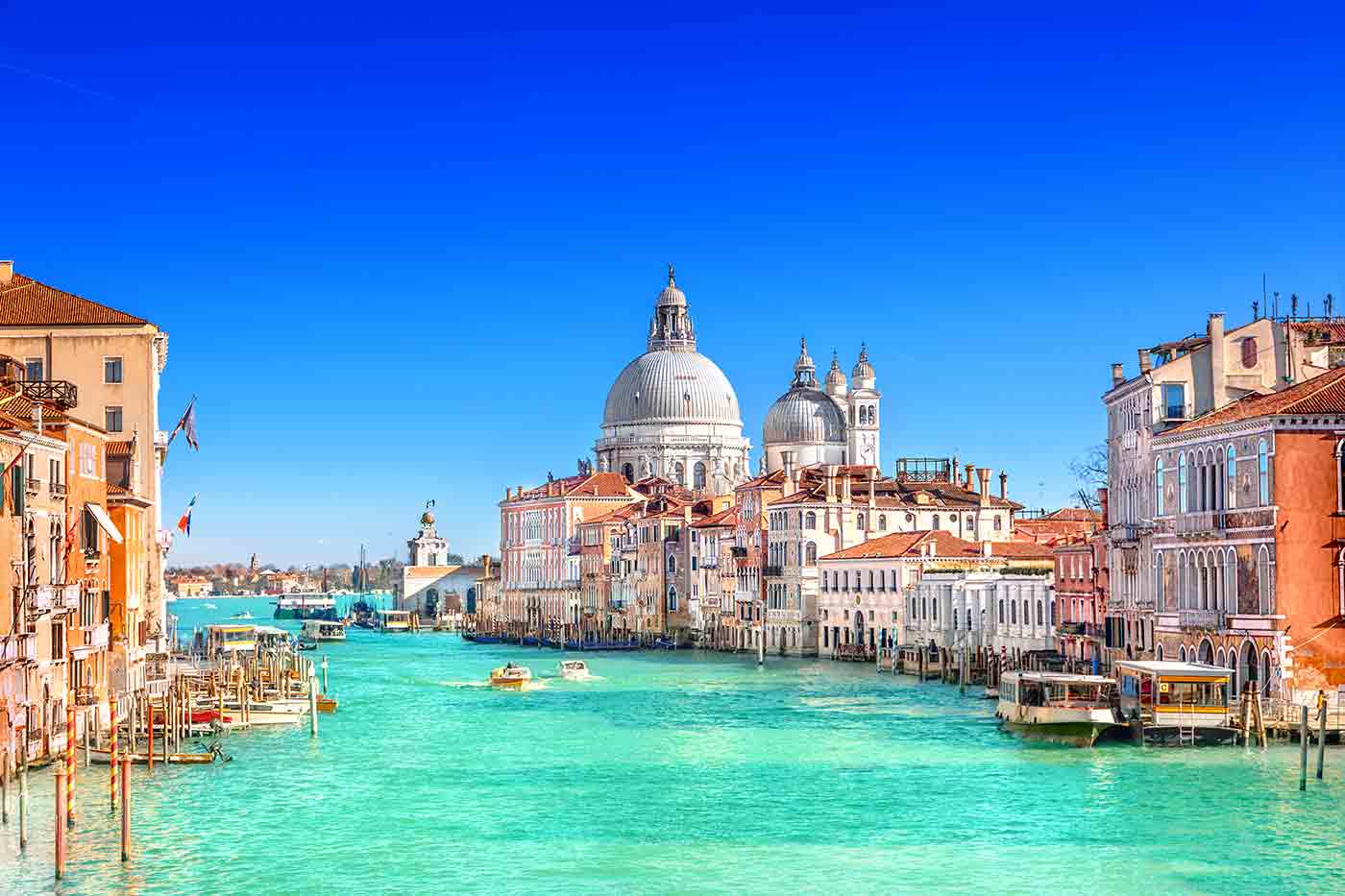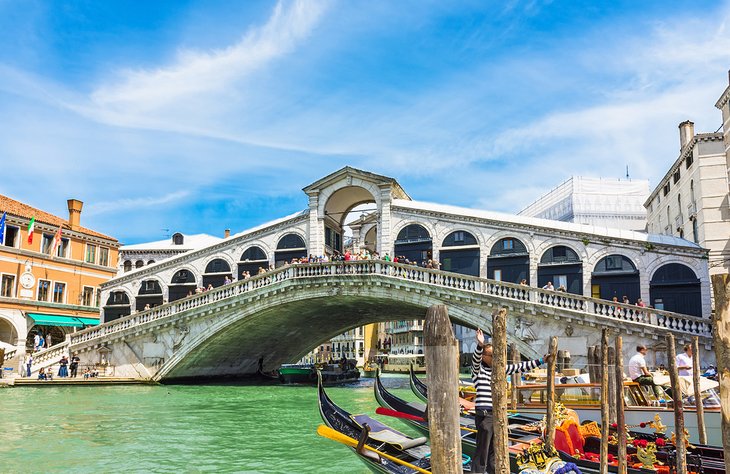
Venice, the "Floating City," "City of Bridges," "La Serenissima" – few places on Earth captivate the imagination quite like this extraordinary Italian marvel. A masterpiece of human ingenuity and resilience, built upon a lagoon, Venice defies logic and enchants the senses. Its labyrinthine canals, opulent palaces, and hidden squares whisper tales of centuries past, inviting travelers to step into a living dream. This article will guide you through the top attractions, rich history, essential travel tips, accommodation choices, transportation secrets, and the best times to visit, ensuring your Venetian adventure is nothing short of magical.
A Tapestry of Time: Venice’s Enduring History
The story of Venice is as unique and compelling as its physical landscape. Born out of necessity, its origins trace back to the 5th and 6th centuries when mainland inhabitants fled barbarian invasions, seeking refuge in the marshy, uninviting islands of the Venetian Lagoon. What began as a scattered collection of small settlements slowly coalesced into a formidable maritime power.

Related Articles about Venice: A Symphony of Stone and Water – Unveiling the Serenissima’s Enduring Magic:
- Rome: An Eternal City Awaits – Your Comprehensive Travel Guide
- Fiji: An Archipelago of Dreams – Your Ultimate Guide to Paradise
- Venice: A Timeless Travel Guide to the Floating City
- Lisbon: A Guide to the City of Light, Sound, and Sizzle
- Marrakech: A Sensory Symphony in the Ochre City
By the 9th century, Venice had established itself as an independent republic, strategically positioned between the Eastern and Western Roman Empires. Its distinctive form of government, led by an elected Doge, fostered an unparalleled spirit of enterprise and innovation. The city became a crucial nexus for trade, connecting Europe with the East. Spices, silks, and precious goods flowed through its bustling ports, enriching its coffers and fueling its artistic and architectural ambitions.
The Republic of Venice, known as La Serenissima (The Most Serene Republic), reached its zenith during the High Middle Ages and Renaissance. Its naval dominance was legendary, exemplified by its victory in the Battle of Lepanto in 1571. This period saw the construction of its most iconic landmarks – St. Mark’s Basilica, a dazzling fusion of Byzantine and Western styles, and the Doge’s Palace, a testament to the city’s political and economic might. Artists like Titian, Tintoretto, and Veronese adorned its churches and palaces with masterpieces, solidifying Venice’s reputation as a cultural powerhouse.
However, the discovery of new trade routes around Africa in the late 15th century gradually diminished Venice’s commercial supremacy. While its cultural influence remained strong, its political and economic power waned. In 1797, Napoleon Bonaparte brought an end to the thousand-year-old Republic, ceding it to Austria. Venice eventually became part of the unified Kingdom of Italy in 1866.
Today, Venice grapples with the challenges of mass tourism, climate change, and the ongoing delicate balance between preservation and modern life. Yet, its spirit endures, a testament to the ingenuity and artistry of its founders, continuously inviting the world to marvel at its impossible beauty.
Navigating the Labyrinth: Venice’s Top Attractions
Venice is an open-air museum, where every corner reveals a new wonder. While getting lost is part of its charm, certain landmarks are simply unmissable.
-
St. Mark’s Square (Piazza San Marco): The undisputed heart of Venice, Napoleon famously called it "the drawing room of Europe." This grand piazza is flanked by architectural masterpieces.

- St. Mark’s Basilica (Basilica di San Marco): A dazzling example of Italo-Byzantine architecture, its façade shimmers with golden mosaics depicting biblical scenes. Inside, the sheer opulence of gold, marble, and intricate artwork is breathtaking. Don’t miss the Pala d’Oro, an exquisite altar screen of gold and jewels.
- Doge’s Palace (Palazzo Ducale): Adjacent to the Basilica, this magnificent Gothic palace was the seat of Venetian power for centuries. Explore its opulent chambers, grand staircases, armories, and chilling prisons, connected by the famous Bridge of Sighs (Ponte dei Sospiri), from which condemned prisoners once cast their last glance at the lagoon.
- St. Mark’s Campanile: For unparalleled panoramic views of Venice and its lagoon, ascend the Campanile. The vistas stretching across the rooftops, canals, and distant islands are truly unforgettable.
- Correr Museum: Located in the Procuratie Nuove, this museum offers insights into Venetian art, history, and culture.
-
The Grand Canal (Canal Grande): The city’s main artery, this S-shaped waterway is a spectacle in itself. Lined with over 170 magnificent palaces dating from the 13th to the 18th centuries, a journey along its waters provides a living history lesson.
- Rialto Bridge (Ponte di Rialto): The oldest and most iconic of the four bridges spanning the Grand Canal, the Rialto is a bustling hub with shops built into its arches. It offers fantastic views and is a perfect spot for people-watching. Nearby, the Rialto Market (Mercati di Rialto) is a vibrant hub of fresh produce, seafood, and local life.
-
Gondola Ride: While undeniably a tourist cliché, a gondola ride remains a quintessential Venetian experience. Gliding silently through narrow canals, under charming bridges, and past historic buildings offers a unique perspective and an undeniable sense of romance. Negotiate the price beforehand.
-
Accademia Gallery (Gallerie dell’Accademia): Housed in a former convent, this prestigious art museum boasts an unparalleled collection of Venetian painting from the 13th to the 18th centuries. Masterpieces by Bellini, Titian, Tintoretto, Veronese, and Canaletto provide a profound insight into the Venetian School.
-
Peggy Guggenheim Collection: For a stark contrast to the classical art, this modern art museum in Peggy Guggenheim’s former home on the Grand Canal showcases an impressive collection of Cubist, Surrealist, and Abstract Expressionist works by artists like Picasso, Dalí, Pollock, and Kandinsky.
-
Libreria Acqua Alta: A whimsical and utterly unique bookstore. Books are stacked in bathtubs, gondolas, and even a full-sized boat to protect them from the frequent "acqua alta" (high water). Its charming chaos and resident cats make it a delightful stop.
-
Wandering the Calli and Campi: Perhaps the greatest attraction of all is simply getting lost. Venice’s network of narrow alleys (calli), small squares (campi), and hidden bridges beckons exploration. Discover artisan workshops, charming cafes, and unexpected views away from the main tourist throngs.
-
Island Hopping:
- Murano: Famous for its exquisite glassmaking tradition. Visit a glass factory to watch a demonstration, and browse the numerous shops.
- Burano: A picturesque fishing village renowned for its brightly painted houses and traditional lacemaking. It’s a photographer’s dream.
- Torcello: A tranquil, sparsely populated island, home to the ancient Cathedral of Santa Maria Assunta with its stunning Byzantine mosaics, offering a glimpse into Venice’s earliest history.
Practicalities for the Perplexed Traveler: Getting There & Around
Venice’s unique geography dictates its transportation. Cars are non-existent in the historic center.
-
Arrival:
- Marco Polo Airport (VCE): Connects to Venice via Alilaguna water bus, ATVO express bus (to Piazzale Roma), or private water taxi (expensive but scenic).
- Treviso Airport (TSF): Primarily serves budget airlines; connect via ATVO bus to Piazzale Roma.
- Train (Santa Lucia Station): Most convenient for mainland arrivals, stepping directly into the heart of Venice.
- Bus/Car (Piazzale Roma/Tronchetto): The last points accessible by road. From here, you must switch to water or foot.
-
Getting Around:
- Walking: This is the primary and most rewarding way to explore. Wear comfortable shoes!
- Vaporetti (Water Buses): Operated by ACTV, these are Venice’s public transport system. They run on specific routes along the Grand Canal and to the outer islands. Purchase tickets (or a multi-day pass, highly recommended) before boarding and validate them at the electronic readers. Fines are steep.
- Traghetti: These are public gondolas that ferry passengers across the Grand Canal at specific points where there are no bridges. A cheap and quick way to experience a gondola-like ride.
- Gondolas: Primarily for leisure and sightseeing. Prices are fixed but can be high.
- Water Taxis: Private, expensive, but offer door-to-door service to many hotels with private docks.
Where to Rest Your Head: Accommodation Options
Venice offers a range of accommodations, from opulent palaces to charming guesthouses.
- Luxury: Many historic palaces along the Grand Canal have been converted into five-star hotels, offering unparalleled views and lavish amenities (e.g., The Gritti Palace, Hotel Danieli).
- Mid-Range: Boutique hotels and charming B&Bs are plentiful, often tucked away in quieter sestieri (neighborhoods) like Cannaregio or Castello. Look for places with canal views or a cozy garden.
- Budget: Hostels and guesthouses can be found, particularly in Cannaregio or Castello. Alternatively, consider staying in Mestre on the mainland, which offers cheaper options and excellent bus/train connections to Venice (10-15 minutes).
- Neighborhoods (Sestieri):
- San Marco: Central, bustling, expensive, close to major attractions.
- Castello: Quieter, more residential, still close to San Marco but offers a local feel.
- Cannaregio: Lively, many restaurants and bars, home to the Jewish Ghetto, good for budget options.
- Dorsoduro: Artistic, bohemian, home to universities and art galleries, vibrant evening scene.
- Santa Croce/San Polo: Authentic, traditional, near Rialto Market.
- Giudecca: A separate island offering stunning views of the main island, quieter, often with more modern hotels.
When to Visit: Seasons of the Serenissima
The best time to visit Venice largely depends on your priorities regarding crowds, weather, and budget.
- Spring (April-May): Generally considered the ideal time. Pleasant temperatures, blooming flowers, and fewer crowds than summer. However, prices start to climb, and Easter/Venetian holidays can bring surges.
- Autumn (September-October): Another excellent choice. The weather is still mild and sunny, the summer crowds have thinned, and the light can be particularly beautiful. This is a great time for photography.
- Summer (June-August): Hot, humid, and extremely crowded. Prices are at their peak, and long queues are common. While the atmosphere is lively, it can be overwhelming. Air conditioning is a must.
- Winter (November-March): The quietest season, offering a more serene and authentic Venice experience. Expect cooler temperatures, fog, and the possibility of "acqua alta" (high water), which can flood parts of St. Mark’s Square. However, Venice during Carnival (February/March) is a spectacular, albeit crowded, event. November and January are particularly peaceful.
Essential Travel Tips for a Seamless Sojourn
- Wear Comfortable Shoes: You will be walking a lot and navigating countless bridges with steps. Heels are a definite no-go.
- Get Lost (Intentionally): While planning is good, allow yourself to wander off the main tourist paths. Some of Venice’s greatest charms are found in its quiet, unassuming backstreets.
- Learn Basic Italian Phrases: A "Grazie" (thank you) and "Buongiorno" (good day) go a long way.
- Be Prepared for Acqua Alta: If visiting in autumn or winter, check forecasts. While usually manageable with temporary walkways, rubber boots might be useful.
- Validate Vaporetto Tickets: Don’t forget to tap your ticket or pass on the electronic reader before boarding a vaporetto, or you risk a hefty fine.
- Eat Cicchetti: Venice’s answer to tapas, these small savory snacks are a delicious and affordable way to sample local cuisine. Pair them with an ombra (small glass of wine).
- Beware of Tourist Traps: Restaurants directly on St. Mark’s Square or major thoroughfares are often overpriced and of lower quality. Venture into quieter areas for better food and value.
- Pack Light: You’ll be carrying your luggage over bridges and through crowded streets. Less is more.
- Respect Local Culture: Dress modestly when visiting churches, keep noise levels down in residential areas, and avoid eating or sitting on church steps or monuments.
- Book in Advance: Especially for peak season, reserve popular attractions (Doge’s Palace, St. Mark’s Basilica) and accommodations well in advance to avoid disappointment and save time.
Venice is more than just a destination; it’s an experience, a journey into a world where water is the road and history flows around every corner. It challenges, it enchants, and it leaves an indelible mark on every soul who ventures into its embrace. Come prepared to be swept away by the unique magic of the Serenissima.





